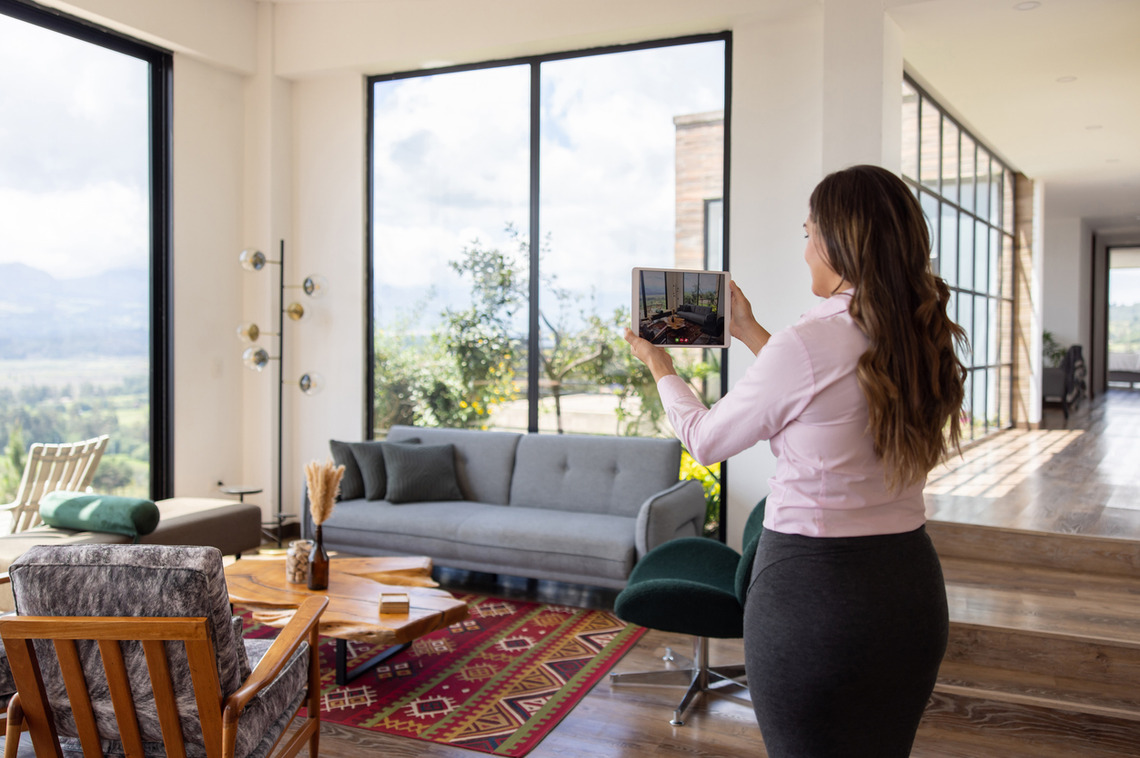There is currently back-and-forth about how and where digital real estate listings will be disseminated. Whether to favor private listings over multiple listing services (MLSs) is a hot industry topic, while big players such as Zillow are pushing back against such private listings.
What seems unlikely to change is that digital listings will feature photos of the home. It’s the most natural and upfront way to reel in interest—listing descriptions suggest features of a home, while photos show those features. So, what is the best way to make sure those listing photos are the best they can be? If you’re on a team, then you’re in a prime location to share and attract such tips.
Know which teammates are the best photographers
The built-in advantage of a real estate team is you work with people you can ask for advice every day. And since you are on the same team, the disincentives for offering advice (creating a business rival) are minimized.
So, there’s absolutely no shame in approaching the top performers on your team and asking how they take/use photos for listings. What camera(s) do they use, so you can know if that’s a tool you should get yourself? Do they exclusively hire professional photographers? Or do they use only their phone cameras—if so, what tricks do they use to make the listing photos stand out as more polished than an Instagram post? Do they incorporate video at all? What tools do they use for that? And so forth—if a strategy is a proven success, then following it is the smart thing to do.
Lead with the exterior in your listing presentation
Take only a brief look at online real estate listings and you’ll notice a formula to the lead photo—it’s always a wide shot of the house seen from front on. This is something to not experiment with. This type of photo is the standard lead image of a listing for a reason.
Putting the exterior photos first replicates the experience of visiting a house in person. The first thing you see when visiting a house is the exterior, then after it catches your interest, you investigate further to see if the interior matches the outside. If a buyer doesn’t like the exterior of the house, then they likely won’t bother checking out the inside. Warding off potential leads can sound counterproductive, but if they’re not the right fit for the house, it’s best for everyone they know that immediately.
If a buyer purchases a house, then for everyday they own it, the exterior of the house will be the sight they’re coming home to. Seeing the house should excite and reassure them, so test if it does by putting the exterior photos first.
Know which parts of the house photograph best…
It’s not only your teammates who you should be asking for advice. No matter how long they’ve been living there, your listing clients probably know a fair bit about the house. So, ask them for photography tips. They’ve got a vested interest in a top-tier listing presentation too.
Have they had any recent renovations to the home’s interior done? If so, lead with photos of the renovated area as the first look inside the house. A buyer seeing the interior of the house is not a second impression, but rather a second first impression. If the sheen of the renovation hasn’t worn off yet, that’ll spark interest.
…And how to photograph those parts of the house
Some also recommend using natural lighting to take the best listing photos—it can make rooms appear brighter, and it is probably a better way to convey what the home naturally looks like when living in it. Tungsten electrical lights can cost a pretty penny as well (these could be a tool worth a team-wide investment).
The flip-side of natural light is that your command over the lighting isn’t as direct.
Here’s where you can draw on your own experience—you surely know your region well just from living there, so consider what the brightest hours of the day are. Then, schedule that time to take the photos. But strive for even lighting. The house may look beautiful at sunset, but the resulting photo could be too moody.
The primary purpose of the listing photo is information. You’re not making the photos beautiful for beauty or artistry’s sake. Your goal is also to make a buyer fall in love with the house, not a photo of the house.
Be judicious with photo editing
A listing should be carefully curated to show the best parts of the house. That extends to the photos of the house itself—but how much editing is too much editing?
Cropping for better framing or a closer look at the house? That’s a totally innocuous change. Maybe it was a cloudier-than-expected day when you took the photos, so you brighten up the mood with Photoshop. Again, that’s only (presumably) showing what the house would look like on a sunny day, so it’s not really the wrong impression.
But as you edit your listing photos, be mindful of the thin line to false advertising. Color correction, for instance—if the house is colored white, then you don’t want the photos to make the paint look yellow, pink or turquoise instead.
California is also currently considering a bill that would require agents to disclose when they use AI in listing photos. Though not law yet, remembering this bill would be a good call—AI’s uses are many and it comes with convenience, but if you rely only on it, you can create a different (and inaccurate) impression than an unedited photo would. AI photos also may not have the same copyright protections, and individual MLSs have rules on AI edited or generated photos.

